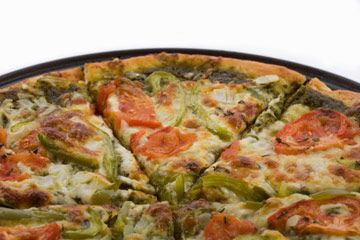Traditional Spanish Food
Lying at the crossroads of Europe and Africa, myriad cultures from the ancient Greeks to the Moors have influenced Spanish cuisine. When the Phoenicians, a seafaring people, reached southern Spain in about 1000 B.C., they brought with them sauces. The Greeks added olives and olive oil, while Jews and Romans contributed their own culinary twists [source: Ethnic Spicy Food and More].
Yet, it was the Moors, who ruled Spain for 800 years, that contributed the most to Spanish gastronomy. The Moors introduced new kinds of fruits, nuts and seasonings, including almonds, saffron, cinnamon, nutmeg and sesame [source: Parrish].
Advertisement
The people of Hispania used these new spices and seasonings in very special ways, using them to season pork, ham and sausage, foods that Muslims were forbidden to eat. Today, the gastronomic tie between Spain and the Moors can still be tasted. Those who have traveled in Spain and Morocco, just across the Strait of Gibraltar, can readily tell the similarities between the two flavor palates [source: Parrish].
The New World also influenced Spanish cooking. When Columbus returned to Spain from the Americas (he was actually looking for a route to Asia), he brought back chocolate, vanilla, beans and potatoes, all of which are now staples of the Spanish diet [source: Ethnic Spicy Food and More].
Spanish cuisine varies among Spain's many regions. For example, jamon Serrano, which means "mountain" ham, is popular in the mountains, while ajo, or garlic, is used everywhere. Although Spanish cooking has influenced many regions, including many Latin America cultures, experts warn not to confuse Spanish cuisine with salsa, chilies or even tortillas. Instead, here are just a few of some truly Spanish foods:
- Seville Manzanilla olives -- These green olives are home-cured, slightly bitter, and flavored with garlic, lemon and thyme. They are big and meaty.
- Olive oil -- Spain is the leading producer of olive oil in the world. The Spanish use olive oil not only in their traditional entrees, but also in many desserts.
- Tomatoes -- Tomatoes are a staple in salads, tomato sauce and gazpacho, a refreshingly cold soup made with peppers, cucumbers, olive oil, vinegar and spices.
- Paella -- A tasty meal that originated in Valencia. Paella is made with saffron rice, vegetables, seafood and meat.
- Fish and seafood -- With nearly 3,000 miles (4,828 kilometers) of coastline, seafood is an important part of the Spanish diet.
- Tapas -- Lunch and dinner are the two main meals in Spain, although the Spanish like to snack on these small portions of grilled meats, tiny fish and other tasty bites, often served hot and cold.


